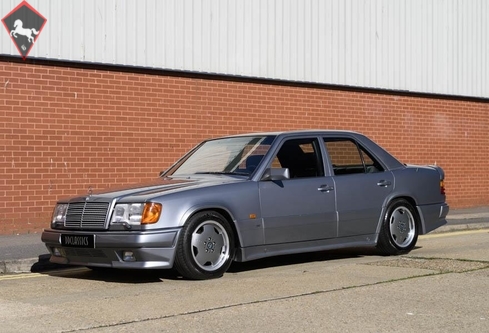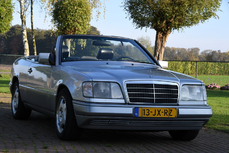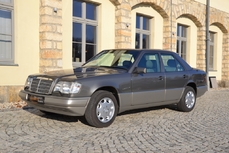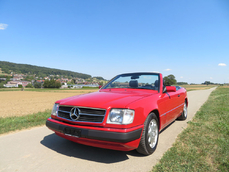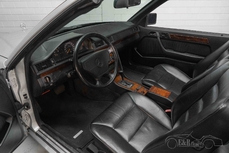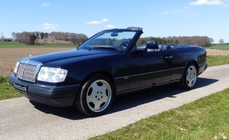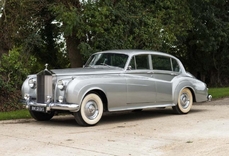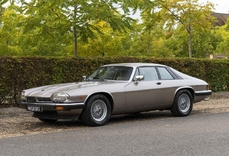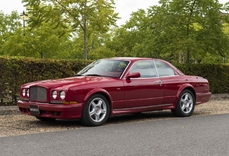Mercedes-Benz 300 w124 AMG (LHD) 3.0 1990
General description :
Desirable Pre-Merger AMG
An incredibly rare example of a 3.4 AMG
Finished in Perlmuttgrau Metallic with Schwarz leather interior
5 Spoke AMG Alloys
Fitted with Recaro C Classic heated, electric seats
1990 Mercedes-Benz 300E 3.4 AMG (LHD)
Launched in November 1984, the Mercedes-Benz W124, the model that inaugurated the E-Class moniker in 1993, is nearing its 30th anniversary, a fact that many cars from this series appear to ignore. Acknowledged by Mercedes-Benz one of its “over-engineered cars”, the W124 series was offered as a Saloon, Estate, Coupé, long-wheelbase version and Convertible. More than 2.7 million units were produced between 1984 and 1997, a testimony to the W124’s success.
AMG meanwhile was an already well respected tuning house, based out of Affalterbach, Germany, specialising in Mercedes-Benzes, for both racecars and road cars. Founded in 1967, the company had been quite a success, from their achievements with the 300SEL 6.3 based “Red Pig” to their tasteful customisation of W126s etc in the 1980s, not to mention their performance upgrading, resulting in the iconic AMG “Hammers” and the 6 litre monster that propelled them.
In the 1990s, the W124 became their main focus for upgrading and they did this to an impressive degree, varying from 6 cylinder cars to putting their 6.0 V8s in 124s creating the E60 AMG. These were the last few years before ultimately, Mercedes signed a merger with AMG, creating the sporting giant we all know and love today as Mercedes-AMG. And whilst Post-Merger AMG’s have a clear value and global appreciation, the rarity of Pre-Merger AMG cars has seen them increase dramatically in value and deservedly so, especially when one considers their motoring significance, which is where our car comes in.
The car we offer to you today is an incredibly rare Mercedes 300E 3.4 AMG. Delivered new in Japan in 1990, the car went straight to AMG Japan to receive a full conversion to AMG specification, both mechanical and cosmetic. Featuring a bored out version of the 3.0 Mercedes M104 engine as well as other performance upgrades, the work of the masters at AMG led to a horsepower boost of around 40hp, bringing the total figure to 268hp. This combined with the engine’s lighter weight in comparison to Mercedes’ own 500E gave the 3.4 significant performance figures with 0-60 times of around 6 seconds and a reported top speed of 155 mph.
All in all, this makes for an genuinely fun and engaging car to drive which is only helped by the subtle but elegantly sporting AMG styling kit, combined with the luxury improvements in the form of the front, heated and electric Recaro C-Classic seats which are a very desirable feature indeed. This is of course, not even mentioning the sheer rarity of such a vehicle, with admittedly little known in the way of production figures of AMG 3.4s but they are believed to be rarer than the 6.0 Hammers, i.e. the Mercedes E60 AMG. The car is truly not to be missed, especially considering the ever-growing desirability of pre-merger AMG products and the particular rarity of the car we offer before you today.
Now available for viewing at the DD Classics Dealership in London, please call 0208 878 3355 for more information.
https://ddclassics.com/car-listing/mercedes-benz-300e-amg-lhd/
1990 Mercedes-Benz 300 w124 AMG (LHD) 3.0 is listed sold on ClassicDigest in Surrey by DD Classics for £44950.
Car Facts
Car type : Car Make : Mercedes-Benz Model : 300 w124 Model Version : AMG (LHD) 3.0 Engine size : 3.4 Model Year : 1990 Sub type : Station wagon Location : Surrey
Sold
Seller Information
Sold
People who viewed this Mercedes-Benz 300 w124 also viewed similar Mercedes-Benz listed at ClassicDigest
Other cars listed for sale by this dealer
About Mercedes-Benz
In the annals of automotive history, the journey of Mercedes-Benz is a tale that unfolds with the ingenuity of its founding pioneers. In the year 1886, Karl Benz crafted the Benz Patent Motorwagen, a creation that would go down in history as the world's inaugural automobile. Unbeknownst to him, this moment marked the genesis of what would evolve into the most illustrious premium car manufacturer globally. The financial underpinning of this pioneering venture, interestingly, was provided by Karl Benz's wife, Bertha Benz, demonstrating a remarkable partnership that would set the tone for Mercedes-Benz's legacy.A parallel narrative emerged not far away, as Daimler-Motoren-Gesellschaft, founded by Gottlieb Daimler and Wilhelm Maybach, entered the scene. In 1901, they unveiled their automobile under the now-famous moniker "Mercedes," meaning "godsend" in Spanish. This name was bestowed upon the car at the behest of Emil Jellinek's daughter, the distributor for Daimler-Motoren-Gesellschaft. The wheels of innovation were set in motion.
Fast forward to 1926, a pivotal year that witnessed the merger of Daimler with Benz & Cie., culminating in the birth of Daimler-Benz. The amalgamation saw the adoption of "Mercedes-Benz" as the distinguished trademark for their automobiles, fusing the legacies of two visionary entities into one.
Contrary to perceptions of conservatism, the trajectory of Daimler-Benz unfolds as a chronicle of industry firsts. From the introduction of the honeycomb radiator to the float carburetor, and the pioneering implementation of four-wheel brakes in 1924, Daimler-Benz consistently pushed the boundaries of automotive innovation. The diesel-powered Mercedes-Benz 260 D in 1936 marked the inception of diesel engines in passenger cars. The iconic Mercedes-Benz 300SL Gullwing made history as the first car with direct fuel injection, albeit the Gutbrod's tiny 2-stroke engine can claim precedence.
Safety innovations became a hallmark, with Béla Barényi's patented safety cell design in the "Ponton"-models in 1951, featuring front and rear crumple zones. The W116 450SEL 6.9 saw the introduction of the Anti-Lock Brake system (ABS), another pioneering safety feature. From the first production airbags and beyond, the legacy of "firsts" continued to be etched into the fabric of Daimler-Benz.
Over its centennial journey, Mercedes-Benz has not merely produced cars but has sculpted automotive icons. The SSKL, 710 SSK Trossi Roadster, 770K Grosser, 540K Spezial Roadster, 300SL Gullwing, w100 600 Pullman, w111 280SE 3.5 Flachkühler, w113 230SL Pagoda, w109 300 SEL 6.3, and w201 2.3-16 Cosworth stand testament to the brand's commitment to engineering excellence.
The roaring Silver Arrows, or "Silberpfeile," including the W 25, W 125, W154, W165, and W196, created a legacy of dominance on the racetrack. These machines were not merely cars; they were expressions of precision, speed, and an indomitable spirit that left their competitors in the dust.
As Mercedes-Benz marches into the future, it does so not just as an automaker but as a custodian of a legacy, a torchbearer of innovation, and a beacon of automotive excellence. The road ahead is sure to witness the continued fusion of cutting-edge technology, timeless design, and an unwavering commitment to setting new standards in the world of automobiles.
One luminary figure who left an indelible mark was Béla Barényi, often heralded as the "father of passive safety" for his pioneering work in safety engineering. His patented safety cell design, featuring front and rear crumple zones, became a hallmark of Mercedes-Benz's commitment to occupant safety, setting new standards that reverberated throughout the automotive world.
Moving through the chronicles, the collaborative genius of Wilhelm Maybach, alongside Gottlieb Daimler, laid the foundation for Daimler-Motoren-Gesellschaft. Their innovations not only birthed the first Mercedes but established a culture of relentless pursuit of technological excellence that remains integral to Mercedes-Benz's DNA.
In the post-merger era of 1926, Ferdinand Porsche emerged as a prominent figure within Mercedes-Benz. His work on the Mercedes-Benz S-Type, a supercharged race car, garnered acclaim and set the stage for a legacy that extended far beyond the marque. Porsche's impact would later extend to his eponymous company, but his influence at Mercedes-Benz during those formative years was pivotal.
As the 20th century progressed, the legendary Rudolf Uhlenhaut emerged as a key figure. Uhlenhaut, an accomplished engineer and the driving force behind the iconic Silver Arrows, played a crucial role in Mercedes-Benz's dominance in motorsports. His engineering prowess and attention to detail were instrumental in creating some of the most formidable racing cars of the era.
In the latter half of the century, figures like Bruno Sacco, the head of design at Mercedes-Benz from 1975 to 1999, left an indelible imprint on the brand's aesthetic identity. Sacco's design philosophy, characterized by clean lines and timeless elegance, shaped iconic models like the W126 S-Class and the W201 190E, solidifying Mercedes-Benz's reputation for luxury and sophistication.
The narrative would be incomplete without acknowledging the contributions of engineers like Hans Scherenberg, whose leadership in the 1970s ushered in a new era of technological innovation at Mercedes-Benz. Scherenberg's tenure saw the development of groundbreaking technologies, including the Anti-Lock Brake system (ABS) and the introduction of airbags in production cars.
